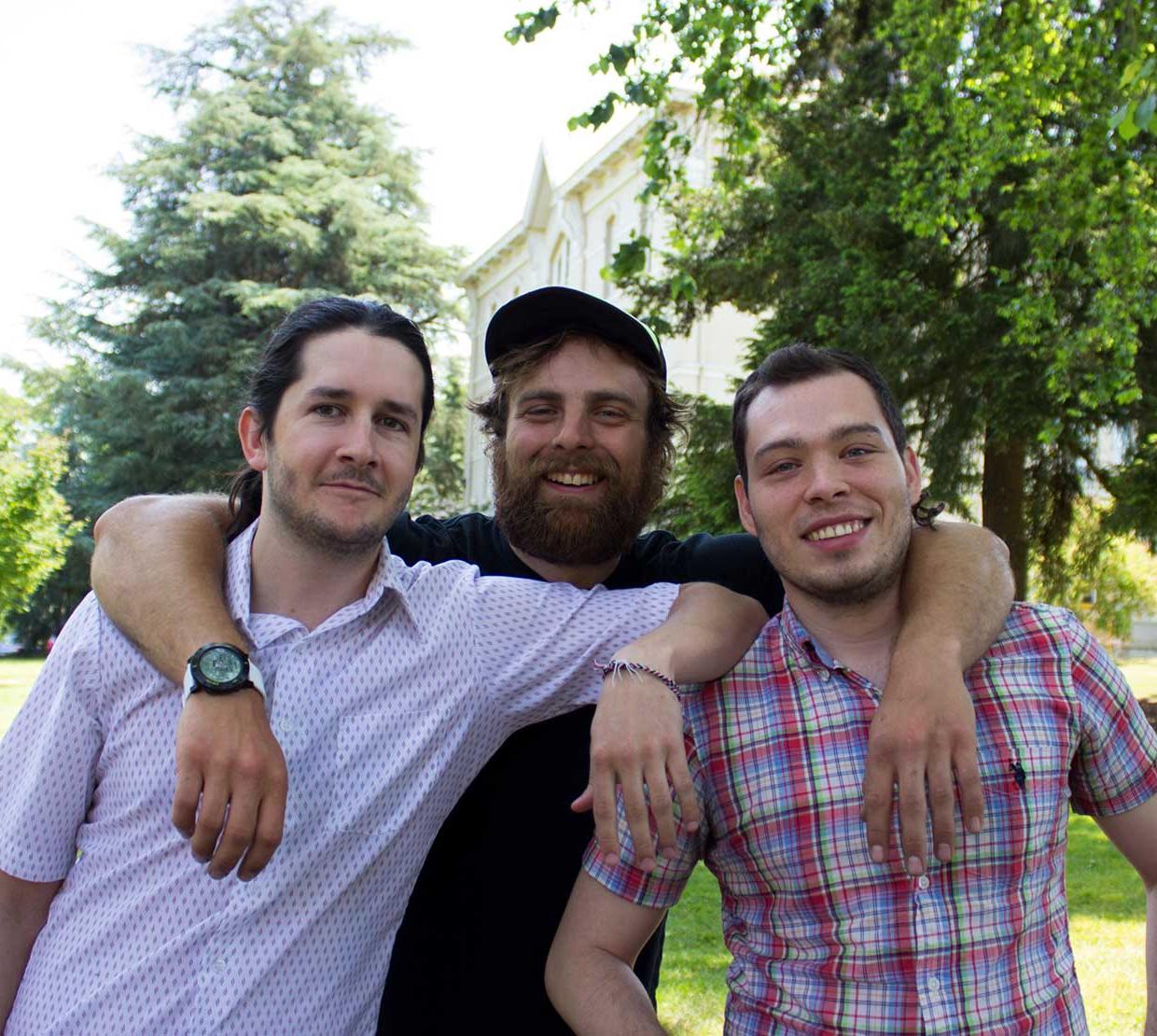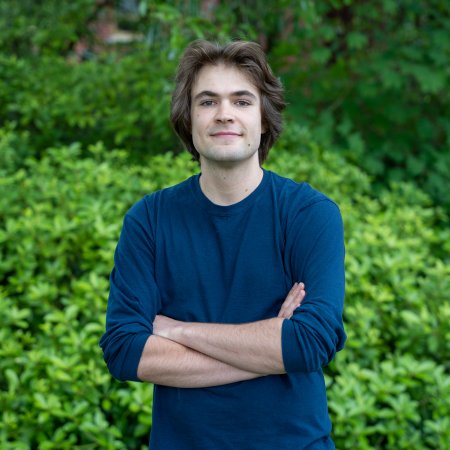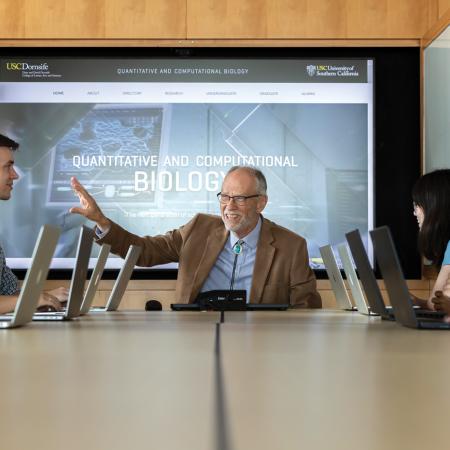The National Science Foundation Research Traineeship (NRT) project on “Risk and Uncertainty Quantification in Marine Science” at Oregon State University is preparing a new generation of natural resource scientists and managers to study, protect, and manage ocean systems. The trainees combine mathematics, statistics, and computer science with environmental and social sciences to study significant societal problems using large and ever-expanding data resources. With powerful analytical tools, they are tracking the top-down effects of human actions and the bottom-up effects of climate change on the ocean system.
Through a combination of technical coursework, communication workshops, national and international internships, stakeholder engagement, peer mentoring, and involvement in transdisciplinary research projects, NRT@OSU trainees learn about the dynamics of coupled natural-human systems, the science of big data, risk and uncertainty quantification, and communication.
Three mathematics graduate students have been funded by the NRT@OSU program. These three students describe below their experiences in this innovative and highly transdisciplinary program.
Sebastián Naranjo Álvarez (Advisor: Vrushali Bokil)
After completing my studies in high school I was mesmerized by the elegance of the simplicity of the laws of physics and modeling of physical phenomenon. As an undergraduate student I switched my attention to mathematics and completed the Colombian equivalent of a bachelor’s degree in mathematics, with a focus on partial differential equations. As a graduate student at Oregon State University, I feel compelled to return to my roots and become a transdisciplinary researcher capable of understanding the physics and the mathematics that rule the baffling universe we inhabit, as well as being able to take advantage of the computational techniques we have available in order to faithfully simulate the real world.
One of the principal goals of the NRT is to provide the next generation of researchers with the skills to conduct transdisciplinary research. When I found this out, I jumped at the opportunity of applying to be a NRT trainee.
Transdisciplinary collaborations are challenging by nature. As a trainee I have had ample exposure to students from a broad array of disciplines and how they view mathematical principles and research in mathematics. This is an experience that I would not have had otherwise, and will shape my approach to future collaborations. Mathematics is abstract and built like a tower. One cannot understand advanced mathematical concepts without first studying the theories that they are based on. This makes communicating the techniques of mathematics to professionals outside the field very challenging. Communication has, therefore, been one of the greatest challenges of the NRT, and misunderstandings about the nature of mathematics remain prevalent. This has been an eye opener to me and one of the greatest takeaways from the program.
In my second year, I have collaborated with faculty and students from ecology and anthropology. Along with Elena Tuttle (Horticulture, College of Agricultural Sciences) and Patricia Halleran (Cultural, Linguistic Anthropology, College of Liberal Arts), I am working on a project that explores the concept of cultural importance of particular species in risk and uncertainty analysis in the context of the indigenous communities of Oregon. As part of this project, I am developing a mathematical model for the spread of opinions in different types of communities. Aside from the social justice impact of my work I have also learned important skills in communication and collaboration that allow me to conduct research with academics in wide ranging areas from the humanities to the social and natural sciences. This type of training is one that few mathematicians have and will allow me to, in the future, work with engineers and scientists to bring physics and mathematics together.
As one of the core requirements of the NRT, I will take part in an internship at Los Alamos National Laboratory (LANL) in the group on Applied Mathematics and Plasma Physics to work on problems in computational electromagnetics. I feel very privileged to have this opportunity and very thankful for the support of the NRT.
Will Mayfield (Advisor: Juan Restrepo)
I was a member of the cohort of NRT trainees in 2016-2017, and was placed in a group that was initially entitled “Tsunami Disaster Response," along with Michael Dumelle (PhD, Statistics) and Harrison Ko (PhD, Civil Engineering). The project evolved into developing a methodology that aims to provide uncertainty information for sea surface elevation in near-shore regions after a disturbance (such as a tsunami!). This work combined a variation of a shallow water model, numerical Green’s functions, and statistical interpolation to be able to efficiently produce ensembles of forecasts that would otherwise be inaccessibly computationally intensive. This work combined the various skills of the entire group and we continue to work together on the project, presenting posters at the Society for Industrial and Applied Mathematics-Pacific Northwest (SIAM PNW) and Ocean Sciences conferences, and we plan to submit the work for publication soon.
There are inherent challenges with trying to do interdisciplinary work, most often due to the very different languages spoken by contributors from different fields. This presented obstacles both in the research group as well as the larger cohort and when completing coursework in other departments, where culture and approach can vary widely. Coming from a background of mathematics and the humanities, I had to learn the ways of, for example, engineering—from an outside perspective those fields are often considered to be the same! On the other hand, after a year of working together, my research group became very close with a new shared language that allowed us to collaborate productively.
My experience as an NRT trainee culminated in summer of 2017 with an internship at Pacific Northwest National Laboratory (PNNL). There I worked with the Applied Statistics and Computational Modeling group, supporting various projects related to national security. At the lab, I worked in many different capacities and learned many skills, not the least of which was navigating the culture and interdisciplinary, collaborative nature of the work being done.
The NRT experience gave me many skills and experiences that I will be able to use moving forward—from courses in machine learning, fluid dynamics and risk communication to working within research groups, forming close friendships and learning much about how research is conceived, pursued, and applied. It has been an experience that will change the course of my career and life.
Andrew Jensen (Advisor: David Koslicki)
Our team is studying the relationship between changing oceanic and environmental conditions, Dungeness crab distributions and the socio-economic effects of these. I am involved in three sub-studies. In the first, we are developing a model to look at crab megalope presence from two different sub-populations. We are interested in early/late season larval crab distributions and how they may be related to the current system off of the Oregon coast. Additionally, we are looking at the relationship between environmental variables (sea-surface ocean temperatures, El Nino events etc.) and catch records up and down the west coast. We are hoping to find statistical correlations. Finally, I am looking at quantifying socio-economic vulnerabilities for the Dungeness crab industry. The National Oceanic and Atmospheric Administration(NOAA) has assigned indices to quantify reliance and vulnerability among west coast fisheries in general, and we are working with factor analysis to specify this to the Dungeness crab fishery on the Oregon coast.
The NRT program has given me the opportunity to learn what interdisciplinary collaboration looks like and experience the difficulties and rewards of working in such a broad and diversified research team. I've learned a lot about ecology, oceanography and particularly socio-economics, which has given me a better appreciation of our coastal system in general. I plan to return to graduate school in the future and I hope that I can apply what I have learned to doing research again, particularly looking at problems and topics through other lenses.
We experienced difficulty in managing a large diverse team, narrowing down our project and specifying our research questions. In particular, organizing a research project on pre-existing data was an obstacle, but we have managed to do so and are seeing results. This struggle has taught me much about team work, organization and real world problem solving, expanding on the niche skills I have obtained by studying mathematics.
The NRT has allowed me to experience research from an ecology and social science perspective, greatly expanding my understanding of academic study.




